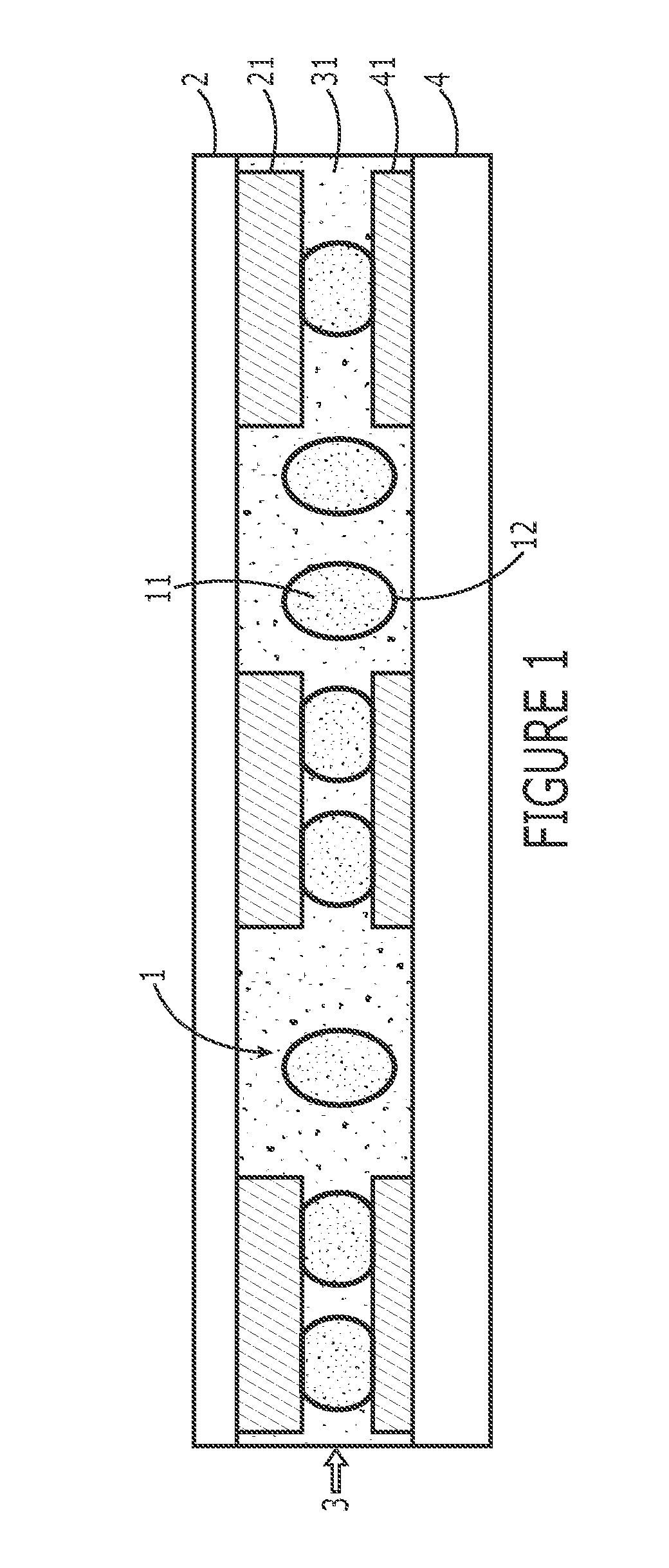Polymer Particles and Conductive Particles Having Enhanced Conducting Properties, and Anisotropic Conductive Packaging Materials Containing the Same
- Summary
- Abstract
- Description
- Claims
- Application Information
AI Technical Summary
Benefits of technology
Problems solved by technology
Method used
Image
Examples
example 1
[0069] (1) Preparation of Seed Particles
[0070] 25 parts by weight of a styrene monomer, 5 parts by weight of 2,2′-azobis(2,4-dimethylvaleronitrile) as an initiator, 18.7 parts by weight of polyvinylpyrrolidone (molecular weight: 40,000), and 200 parts by weight of methanol and 15 parts by weight of ultrapure water as reaction media are mixed together, quantified, and added to a reactor. Thereafter, the reaction mixture is subjected to polymerization under a nitrogen atmosphere at 60° C. for 24 hours to prepare polystyrene seed particles. The seed particles are completely washed with ultrapure water and methanol, and dried in a vacuum freeze dryer to obtain a powder. The seed particles are measured to have an average particle diameter of 1.13 μm, a CV value of 4.0%, and a molecular weight of 12,500.
[0071] (2) Preparation of Polymer Resin-based Particles
[0072] 2 parts by weight of the seed particles are homogeneously dispersed in 450 parts by weight of an aqueous sodium lauryl sulf...
example 2
[0080] Polymer particles and conductive particles are prepared in the same manner as in Example 1, except that a monomer mixture including 60 parts by weight of styrene, 20 parts by weight of divinylbenzene and 20 parts by weight of 1,6-hexanediol diacrylate is used instead of the monomer mixture including 60 parts by weight of styrene, 10 parts by weight of divinylbenzene and 30 parts by weight of 1,6-hexanediol diacrylate. A connection structure is manufactured using the conductive particles. The properties of the polymer particles, the conductive particles and the connection structure are evaluated in the same manner as in Example 1. The results are shown in Table 1.
example 3
[0081] Polymer particles and conductive particles are prepared in the same manner as in Example 1, except that a monomer mixture including 60 parts by weight of styrene, 10 parts by weight of divinylbenzene and 30 parts by weight of polydimethylsiloxane diacrylate (synthesized in the present invention, molecular weight: 950) is used instead of the monomer mixture including 60 parts by weight of styrene, 10 parts by weight of divinylbenzene and 30 parts by weight of 1,6-hexanediol diacrylate. A connection structure is manufactured using the conductive particles. The properties of the polymer particles, the conductive particles and the connection structure are evaluated in the same manner as in Example 1. The results are shown in Table 1.
PUM
| Property | Measurement | Unit |
|---|---|---|
| Fraction | aaaaa | aaaaa |
| Fraction | aaaaa | aaaaa |
| Thickness | aaaaa | aaaaa |
Abstract
Description
Claims
Application Information
 Login to View More
Login to View More - R&D
- Intellectual Property
- Life Sciences
- Materials
- Tech Scout
- Unparalleled Data Quality
- Higher Quality Content
- 60% Fewer Hallucinations
Browse by: Latest US Patents, China's latest patents, Technical Efficacy Thesaurus, Application Domain, Technology Topic, Popular Technical Reports.
© 2025 PatSnap. All rights reserved.Legal|Privacy policy|Modern Slavery Act Transparency Statement|Sitemap|About US| Contact US: help@patsnap.com



